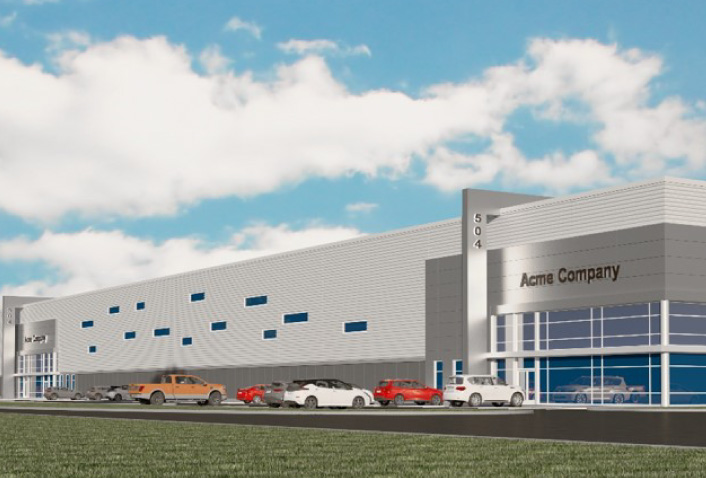Not too long ago, buying goods and services online was once considered “the future”. Whereas today, having something delivered to your doorstep within hours of ordering it has become the norm. As ecommerce continues to change the way we buy goods and services, it is also having a major impact on industrial real estate development. Gone are the days of isolated industrial parks, located far from retail amenities. To attract tenants and gain support from the community, industrial real estate developers can learn from the success of the commercial market and create places rich in amenities that attract tenants and visitors alike.
In the past, industrial parks had only buildings that looked like brick boxes. Today, industrial developments are as eclectic as a posh neighborhood, featuring a variety of building types throughout a campus. They feature a mix of retail buildings that are situated strategically near the main entrance and are accompanied by hotels, medical office, apartment buildings and office spaces. Warehousing and distribution centers are placed in the rear – keeping them out of sight and out of mind. The splashy retail attracts visitors on to campus and provides the commercial side with amenities, such as restaurants, shopping, dry cleaners, coffee shops, and more.
View Maugel's Industrial Portfolio
The mixed-use design is a win for both developers and tenants. The amenities allow for better usage of the campus and it is more appealing to tenants who want walkable experiences. For developers, this experience is designed to diversify the land and make it more attractive to tenants and future owners. Financially, mixed-use campuses typically generate higher income streams from the different asset classes, such as medical office buildings and hotels. The mix of uses also eases the permitting process. For example, typical industrial parks feature large trucks that are coming and going, making all types of noises, which undoubtedly angers neighbors. However, if you create a place that adds services and fosters community, neighbors will be more receptive.
Third Ave and Northwest Park in Burlington, Massachusetts is an example of what Industrial developers are trying to create. This location, as hard as it is to imagine now, was originally an industrial park. Over the past 20 years, it has been repositioned to commercial use. To drive connectivity, the developer, Nordblom Company, relaunched Third Ave into a mixed-use development adjacent to the park. Third Ave now features wonderful restaurants, shopping, entertainment, a hotel, apartments and a grocery store—all of which is walkable from Northwest Park and creates a place where people want to work and visit.
Nordblom’s execution is a prime example of the placemaking concept that is inspiring new industrial development. For example, we are currently working with an industrial developer on a newly created business park in a Boston suburb. The new development features 11 buildings consisting of industrial, flex, retail and medical office. Sited on 190 acres, the park will also feature public amenities such as walking trails, all architected in a way to create a public asset and foster a sense of community. The project was embraced by the town and is attracting tenants who want to provide an enjoyable experience for employees, clients and visitors.
Mike Kunz is a principal of Maugel Architect. For over 25 years, Maugel Architects has been shaping exceptional spaces and creating environments for innovation and growth. Maugel’s designs come to life in millions of square feet of commercial real estate throughout New England for a wide range of industries, including industrial, technology, life sciences, healthcare and residential. Mike can be reached at 978 456 2897, mkunz@maugel.com.

